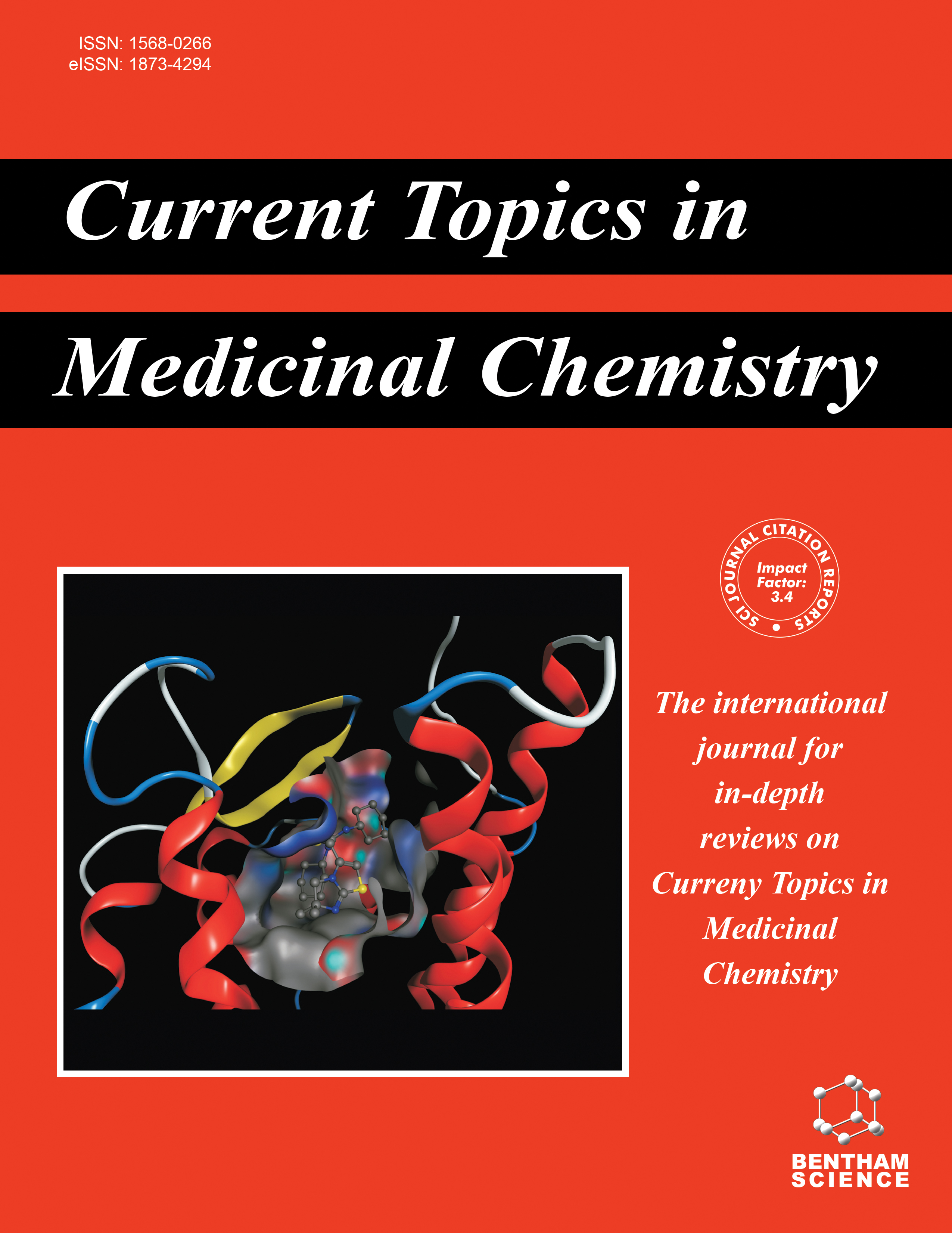- Home
- A-Z Publications
- Current Topics in Medicinal Chemistry
- Previous Issues
- Volume 24, Issue 15, 2024
Current Topics in Medicinal Chemistry - Volume 24, Issue 15, 2024
Volume 24, Issue 15, 2024
-
-
Nutritional Value, Therapeutic Effects, Phytochemistry, and Toxicology of Lepisanthes fruticosa: A Review
More LessAuthors: Lim J. Siang, Harish Rajak and Veerasamy RavichandranThe multifaceted benefits of Lepisanthes fruticosa position it is not only as a promising agricultural commodity but also as a versatile resource with implications for health, biodiversity, and economic growth. Lepisanthes fruticosa has a rich history of traditional use for treating various ailments such as fever and diarrhea. Beyond its traditional uses, the plant's antioxidant properties suggest potential applications in combating oxi Read More
-
-
-
Tackling Nontuberculous Mycobacteria by Repurposable Drugs and Potential Leads from Natural Products
More LessAuthors: Patil Amruta Adhikrao, Gudle Mayuri Motiram and Gautam KumarNontuberculous Mycobacteria (NTM) refer to bacteria other than all Mycobacterium species that do not cause tuberculosis or leprosy, excluding the species of the Mycobacterium tuberculosis complex, M. leprae and M. lepromatosis. NTM are ubiquitous and present in soils and natural waters. NTM can survive in a wide range of environmental conditions. The direct inoculum of the NTM from water or other materials is most likel Read More
-
-
-
The Role of Selenium Nanoparticles in Addressing Diabetic Complications: A Comprehensive Study
More LessAuthors: Siddharth Satpathy, Lipsa Leena Panigrahi and Manoranjan ArakhaDiabetes, as an emerging epidemic, has put forward a significant spotlight on the evolving population worldwide grounded upon the remarkable affliction of healthcare along with economical conflict. Various studies suggested that, in modern society, lack of maintenance of a healthy life style leads to the occurrence of diabetes as insulin resistant, later having a damaging effect on the pancreatic β-cells, suggesting various com Read More
-
-
-
Phytochemicals: Promising Inhibitors of Human Rhinovirus Type 14 3C Protease as a Strategy to Fight the Common Cold
More LessAuthors: Nefeli Theodora Tsilimingkra and Christos PapaneophytouBackground: Human rhinovirus 3C protease (HRV-3Cpro) plays a crucial role in viral proliferation, establishing it as a prime target for antiviral therapy. However, research on identifying HRV-3Cpro inhibitors is still limited. Objective: This study had two primary objectives: first, to validate the efficacy of an end-point colorimetric assay, previously developed by our team, for identifying potential inhibitors of HRV-3Cpro; and seco Read More
-
Volumes & issues
-
Volume 25 (2025)
-
Volume 24 (2024)
-
Volume 23 (2023)
-
Volume 22 (2022)
-
Volume 21 (2021)
-
Volume 20 (2020)
-
Volume 19 (2019)
-
Volume 18 (2018)
-
Volume 17 (2017)
-
Volume 16 (2016)
-
Volume 15 (2015)
-
Volume 14 (2014)
-
Volume 13 (2013)
-
Volume 12 (2012)
-
Volume 11 (2011)
-
Volume 10 (2010)
-
Volume 9 (2009)
-
Volume 8 (2008)
-
Volume 7 (2007)
-
Volume 6 (2006)
-
Volume 5 (2005)
-
Volume 4 (2004)
-
Volume 3 (2003)
-
Volume 2 (2002)
-
Volume 1 (2001)
Most Read This Month
Article
content/journals/ctmc
Journal
10
5
false
en


